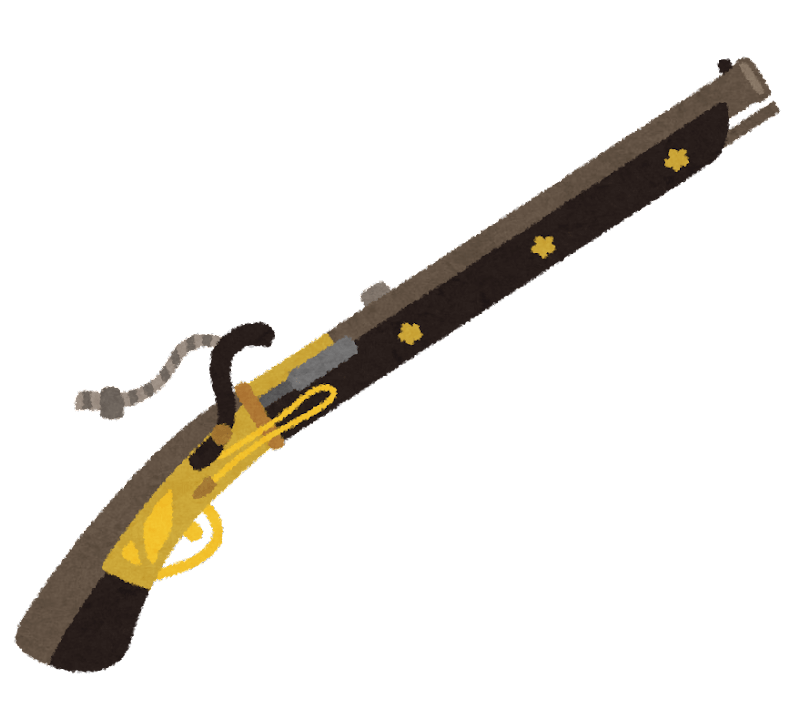 なおえもん
なおえもん
Hi there.I’m Naoemon.
Later, mass production of guns began in Kishu and Sakai.
By the end of the 16th century, Japan was not only the world’s largest owner of guns, but Japanese-made guns, swords, and armor were superior in performance.
I wrote in my previous article that many foreigners who visited Japan at that time recorded that the cultural standard was also higher than that of the West.

Why was Japan not colonized by Western nations?
Portugal and Ispania wanted to invade Japan in the 16th century, but why was Japan spared from invasion by Wes …
Noel Perrin, a professor at Dartmouth College in the United States.
In Noel Perrin’s “The Japanese Who Ditched Their Guns,” which I mentioned in the last issue, he writes
The target was set and 1,000 rounds were fired at once, killing the opponent from a distance, out of earshot.
When confronting guns, bravery is a disadvantage.
The test of skill was no longer for the soldier, but for the commander.
It was a great shock to everyone to realize that a peasant with a gun could easily shoot and kill the most powerful samurai.
After the Battle of Nagashino, two attitudes toward guns began to emerge in Japan.
The warring feudal lords purchased large numbers of guns but did not fight with them themselves.
A separation occurred, with samurai fighting with swords and foot soldiers with guns.
Swords or guns, the two continued to be at odds with each other.
Noel Perrin points out in his book that it was Toyotomi Hideyoshi, Minister of the Grand Council of State of Sekihaku, who first attempted to control guns.
In Japan, the “Sword Hunting Order” was issued in 1588.
This order not only confiscated swords and spears from farmers, but also included guns.
Toyotomi Hideyoshi used the construction of the Great Buddha at Hokoji Temple as an excuse to collect these weapons from the farmers to prevent revolts by the farmers and to promote the separation of farmers and soldiers.
In Europe, on the other hand, there was no such thing as Toyotomi Hideyoshi’s sword-hunting ordinance. However, there was a strong opinion that guns and guns should be controlled because the number of people killed by guns and the speed with which they were used increased.
While Europeans were rapidly developing firearms, Japan, on the contrary, began to control firearms.
In 1607, Tokugawa Ieyasu issued a decree concerning the management of gunsmithing.
Guns could no longer be manufactured without the Tokugawa shogunate’s permission. Since the Tokugawa Shogunate rarely granted permission for gunsmithing except for orders from the shogunate, the lives of gunsmiths soon began to suffer and many of them became sword smiths.
So why was Japan the only country to abandon guns and return to the old world of swords?
Noel Perrin writes that there are at least five reasons.
To summarize.
- samurai made up 7-10% of the total population in Japan and were larger than the knightly orders of any European country. (About 0.6% in England. No country in Europe had more than 1% of the total population).
- Japan’s armed forces and natural conditions made foreign invasion difficult, and conventional weapons were sufficient to maintain Japan’s national unity.
- For the Japanese samurai, the sword was not only a weapon of war, but also the “soul of the samurai.
- There was a trend that Western attitudes toward foreign ideas, especially Christianity and commerce, were unacceptable.
- Swords were considered more dignified weapons than flying weapons.
Among the prisoners of war who were taken in during the Bunroku and Keicho wars initiated by Toyotomi Hideyoshi, there was a scholar of Shu-shi-gaku (the study of the seven elements of the Japanese alphabet).
He preached that the Warring States period was over and that the future of Japan should be based on the principle of civil government, and the Tokugawa Shogunate officially recognized Shu-shi-gaku as its governing philosophy.
Each clan took this as an opportunity to establish clan schools.
A han school is a school established by a clan during the Edo period to educate the children of the clan’s samurai.
The philosophy of governance of the Zhu Zi school is that the source of legitimacy of governance is not power, but virtue.
Zhu Zi school teaches that if one accumulates virtue, life will be good, the clan will be stable, the country will be governed, and peace will prevail.
In the first half of the 17th century, when Grotius in Europe conceived of international law with war as the pillar of his worldview, Japan preached virtue and justice based on Zhu Zi Gaku and made it the basis of its governance.
The Japanese worldview based on civilization and the European worldview based on war emerged almost simultaneously at both ends of the Eurasian continent, with the former taking the path of disarmament based on moral principles and the latter taking the path of military expansion based on hegemony.
Japan abandoned its guns and set out to create a peaceful and prosperous nation.
In the mid-17th century, when the population of Edo was about to reach 500,000, the Kanda waterway was completed followed by the Tamagawa waterway.
The first waterway in New York was completed in 1842, two centuries behind Japan.
While Japan was returning to the world of swords, military technology was advancing in the West, and Japan lagged far behind Western countries in the field of military affairs.
As a result, Japan was in constant danger of being invaded after the arrival of the U.S. Navy ship Perry to Japan in the mid-19th century.
This was a major turning point in Japan’s history.
If Japan had been inferior to Western countries in everything, it would not have been surprising if it had been colonized during this period.
However, many foreigners visited Japan from the end of the Edo period to the Meiji period and left behind various records, many of which speak highly of Japan’s ethnicity and culture at that time.
Noel Perrin, a professor at Dartmouth College in the United States, citing books by Edward Morse, Henry Husken, Townsend Harris, Rutherford Allcock, and others, describes how Japan during the Meiji period was not only safe but also sanitary, and its people were moral, dignified, and prosperous.
Conclusion.
The reason for Japan’s abandonment of guns and return to the world of swords was due to the influence of Zhu Zhi studies and Japan’s unique philosophy of governance.
After this, Japan underwent rapid modernization through the Meiji Restoration, bridging the gap in military power with Western countries and developing as a modern nation. In the process, guns and military technology were reintroduced, and Japan became a modern military power.
0



コメントを残す